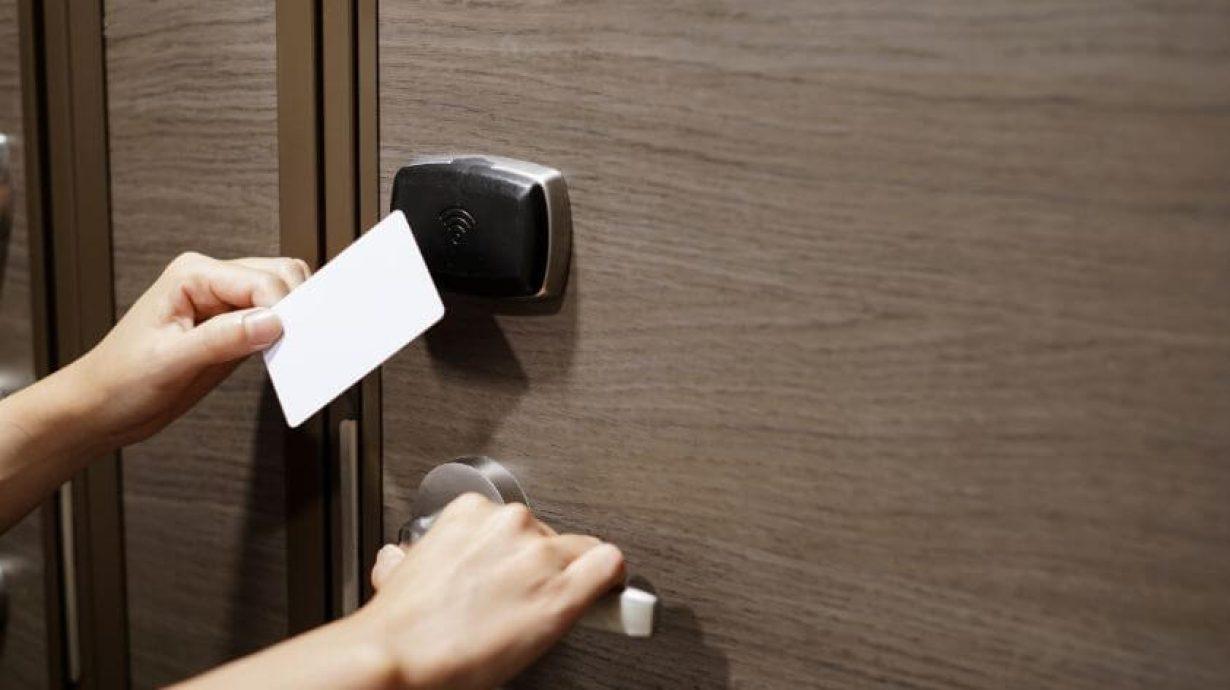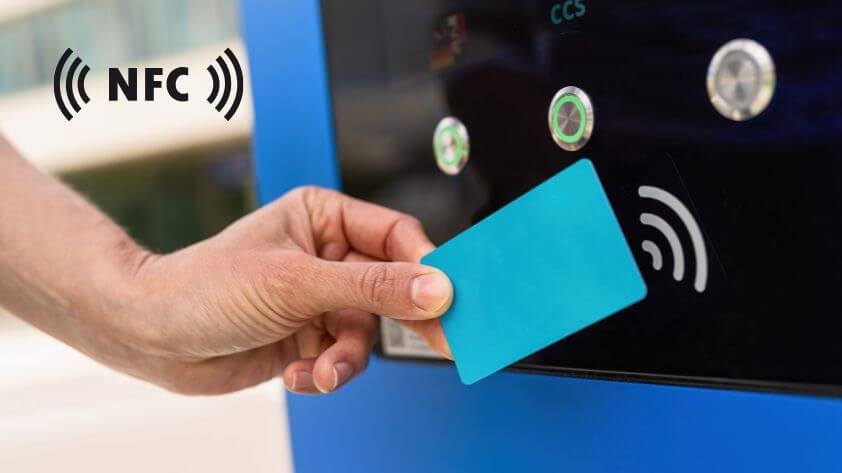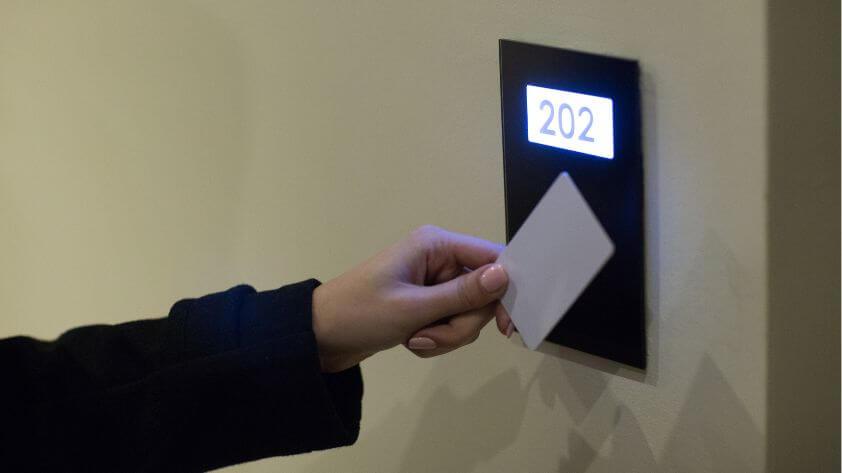Introduction
Radio Frequency Identification (RFID) is a technology that utilizes radio waves to transmit information and identify objects without requiring direct contact. The RFID system comprises an electronic tag (RFID card), a reader, and a background database. Essentially, it works by activating the chip in the electronic tag using electromagnetic waves from the reader, enabling it to read or write necessary data. Due to its advantages such as quick identification, multi-target reading, and contactless operation, RFID technology excels in fields like logistics, retail, healthcare, and identity verification.
RFID technology categorizes cards into low frequency (LF), high frequency (HF), and ultra-high frequency (UHF) based on their operating frequency. The TK4100 serves as a prime example of a low-frequency RFID card, operating at approximately 125kHz. It is designed to be read-only with a unique built-in ID number. Thanks to its affordable price and reliable performance, the TK4100 card is a popular choice for applications such as access control systems, attendance management, and visitor registration in communities. Its straightforward design and battery-free nature contribute to its popularity in everyday applications.

Technical Overview of TK4100 Low-Frequency RFID Cards
Frequency and Technical Specifications
The TK4100 card operates in the 125kHz low-frequency range, allowing for stable data transfer over short distances, typically within about 10 cm. Unlike high- or ultra-high-frequency cards, these low-frequency cards are less susceptible to interference from metal objects or moisture, making them ideal for environments with metal or high humidity.
Another significant attribute of the TK4100 is its read-only mode. Each card comes with a unique ID code that cannot be altered once manufactured. This fixed ID facilitates basic identification and permission control but limits applications requiring frequent data changes.
Card Structure and Composition
TK4100 cards are typically made from PVC or PET and house a small chip and a coiled copper wire antenna inside. The chip contains an unchangeable ID number, and the antenna communicates with the reader using electromagnetic coupling to transfer data. The card’s chip is relatively simple and does not support encryption or data-writing features. The antenna design ensures excellent performance in the low-frequency range and stable communication even in environments with electronic interference.
Cost-Effectiveness
The TK4100 card is highly cost-effective due to its simple design and low-frequency technology. Its production costs are significantly lower than those of high-frequency and ultra-high-frequency cards, making it suitable for bulk purchases in large residential areas or small to medium businesses. Additionally, being passive means it doesn’t require batteries, further reducing maintenance costs.
Requirements for Access Control Systems Using RFID Cards
When selecting an RFID card for an access control system, it’s essential to understand the specific performance requirements. These requirements directly impact the system’s security, user experience, and operational efficiency.
Key Requirements of an Access Control System
Security is paramount in access control systems. RFID cards should have anti-cloning capabilities to prevent unauthorized duplication or data theft. High-security cards often employ data encryption technology to protect information during transmission. The TK4100 card has limitations in this area due to its read-only and non-encrypted design.
Recognition speed and accuracy are also crucial. The system should have fast response times and low misread rates for smooth operation. The TK4100 card demonstrates stable recognition speed at short distances but performs less effectively in environments with significant interference.
Adaptability and compatibility between the RFID card and reader determine the system’s flexibility and expandability. Low-frequency cards like the TK4100 are generally suited for systems with simple infrastructure and are compatible with most 125kHz card readers.
Advantages and Disadvantages of the TK4100 Card
Advantages
The TK4100 card’s low cost makes it ideal for large-scale deployments on a tight budget. Its short reading range reduces interference risks and improves accuracy in environments requiring quick identification. Additionally, low-frequency RFID cards tend to perform more stably in environments with metal and liquids.
Disadvantages
The TK4100 card’s low security due to its read-only nature and lack of encryption is a significant drawback. Its limited data capacity, storing only a unique ID, restricts applications needing more flexible management features. This makes the TK4100 less suitable for environments with higher security requirements.
Applicability in Different Environments
Residential and Office Environments
In residential communities and office buildings, the TK4100 card effectively meets basic identification needs. Its low cost and long lifespan make it suitable for managing resident and employee access without excessive security measures.
Industrial and Commercial Environments
In industrial settings with harsh conditions, the TK4100 card offers good stability, especially in areas with significant humidity or dust. However, commercial environments typically require higher security and reading accuracy, limiting the TK4100’s applicability.
Future Technology Trends
As RFID technology evolves, alternatives like NFC, biometric systems, and smart IoT access control systems are emerging. These technologies offer enhanced security and functionality, potentially replacing traditional RFID cards in future access control systems.

Conclusion
The TK4100 low-frequency RFID card is suitable for simple access control applications where budget constraints and security requirements are moderate. However, for environments demanding higher security, consider more advanced high-frequency RFID cards or smart cards with enhanced encryption features.

FAQs
How Does the TK4100 Card Work in an Access Control System?
The TK4100 card communicates with the reader through electromagnetic waves when approached. The reader activates the card’s chip, reads its unique ID, and transmits this information for identity verification. This contactless operation simplifies access management.
Is the TK4100 Card Suitable for Large Enterprises?
While the TK4100 meets basic access control needs, it may not provide sufficient security for large enterprises with high-demand access systems. Consider more advanced high-frequency RFID cards for enhanced data protection.
What is the Recognition Distance of the TK4100 Card?
The recognition distance is typically a few centimeters, depending on the reader’s power and installation environment. This short range enhances applicability in low-security scenarios but limits use in areas requiring long-distance recognition.
How Does the TK4100 Card Perform in Humid Environments?
The TK4100 performs well in humid environments due to its low-frequency characteristics, which offer better tolerance to moisture. However, extremely high humidity may affect performance, so using waterproof devices is recommended in such cases.
Are There Data Security Risks When Using the TK4100 Card?
Yes, the TK4100 card’s lack of encryption makes it vulnerable to copying or cloning. For higher security environments, choose RFID cards with encryption protection.

RFID Antenna UHF
15-Meter Cable for UHF RFID Fixed Reader
UHF Tag
4″x2″ 860-960MHz UHF RFID Label RFID M4D
UHF Tag
4″x4″UHF RFID Label Alien H3 | ISO18000-6C
RFID Antenna UHF
5-Meter Cable for UHF RFID Fixed Reader
HF Card
ABS RFID KEY-FOB Tag RFID Classic 1K
HF Card
ABS RFID KEY-FOB Tag RFID Classic 4K
HF Card
ABS RFID KEY-FOB Tag RFID Ultralight C
HF Tag
ABS RFID KEY-FOB Tag RFID Ultralight EV1
LF Card
ABS RFID KEY-FOB Tag ATA5577
LF Card
ABS RFID KEY-FOB Tag EM4200
HF Card
ABS RFID KEY-FOB Tag EM4305
HF Card
ABS RFID KEY-FOB Tag RFID TAG 213